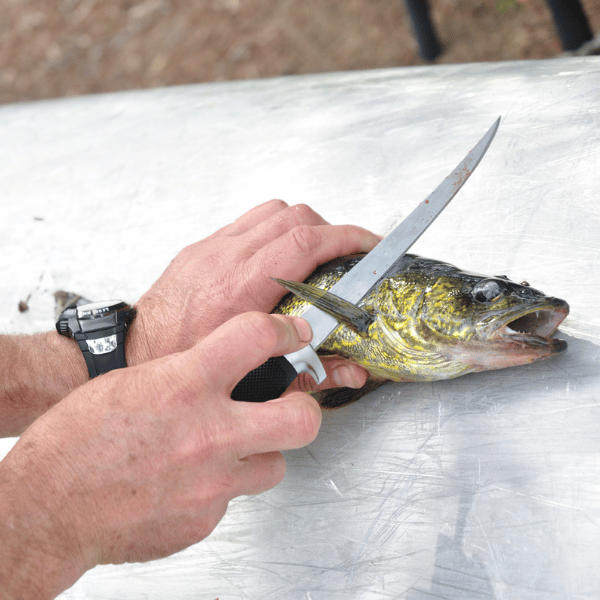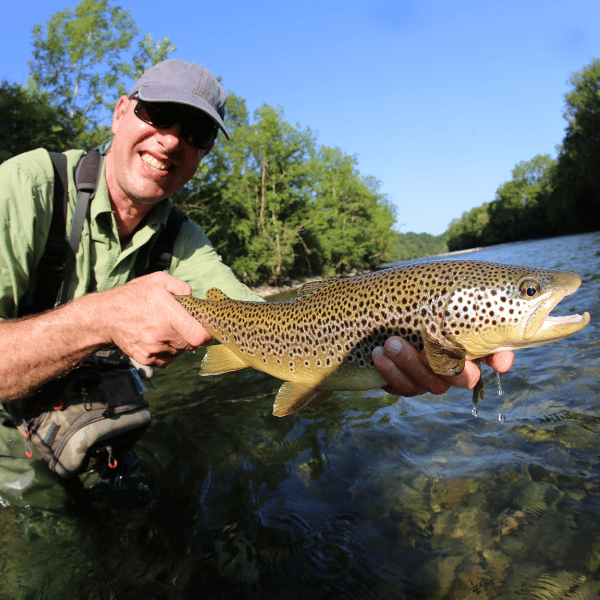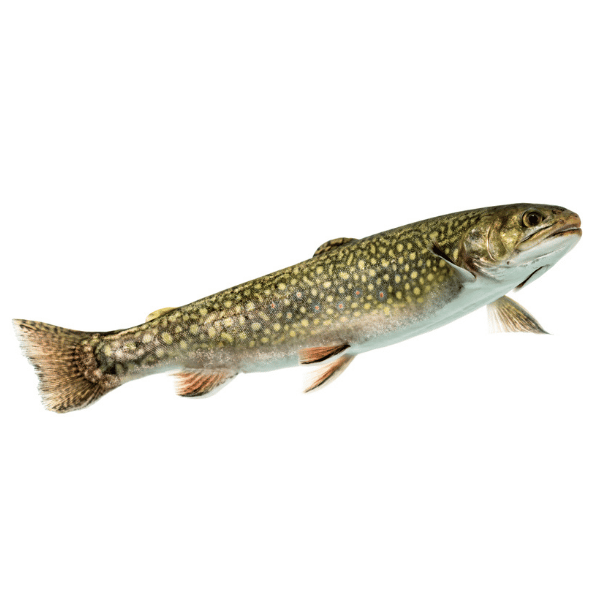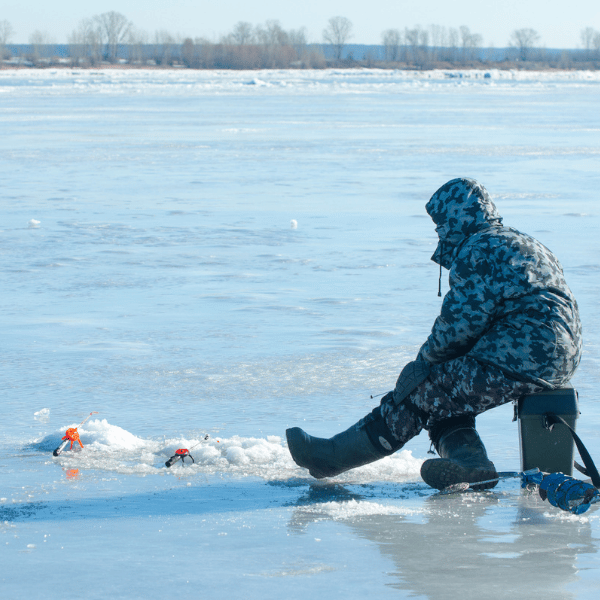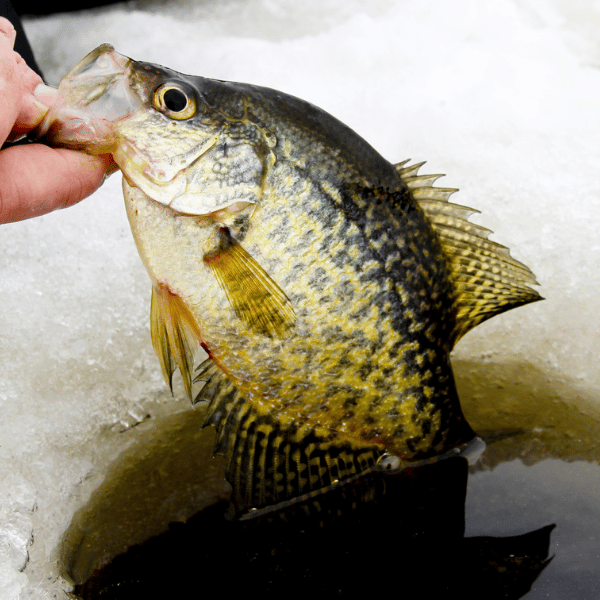Using a Leader for Ice Fishing
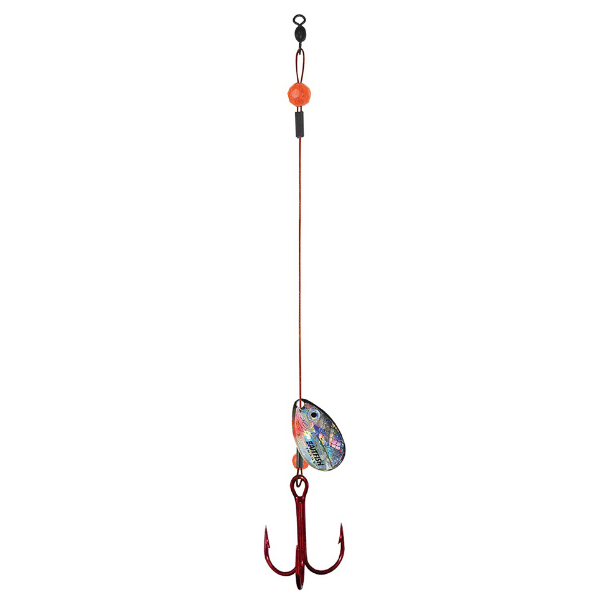
If you’re looking to catch more fish on your next ice fishing trip, using a leader for ice fishing might be the key to your success.
But, how do you use a leader when you’re ice fishing? And what is it about this extra line that can improve your chances of catching a keeper?
In this guide, we will walk through how to use a leader for ice fishing.
Contents
What is a Leader?

A leader is an extra fishing line that ties to the front end of your mainline directly or via a swivel. Fishermen use leaders to avoid snags in the event of a miscast. Leaders also reduce the visibility of your line when fish approach your lure.
If you’re not familiar with using a leader or you’re just looking to try a new tactic, we’ve got you covered. Below we’ll break down exactly why using a leader is so good for ice fishing. Then, we’ll break down how to use one and what your best options are.
Why Use a Leader When Ice Fishing?
Using a leader provides you with several benefits ranging from just saving you money by losing fewer lines to increasing the likelihood you’ll catch a keeper by making your bait look better.
Here are the benefits:
1) Less Visibile to the Fish
Depending on the kind of fish you’re trying to catch, having a less visible line is essential. Some fish have relatively decent eyesight and will see heavier lines in the water and thus avoid your lure. Since leaders are less visible, you can catch fish that you otherwise would have missed.
2) Less Chance of the Line Breaking
Less chance of your line breaking: Lines can break on ice, rocks, or even fish with sharp teeth. Leaders prevent your entire line from breaking if a mishap does occur. Instead of the main line snapping, you’ll just tie on a new leader in the event of any damage. It’s important to note here that swivels can make the process of replacing a snapped leader easier. They typically remain tied to your mainline even after an incident.
3) Better Bait Presentation
Leaders can help make your bait look more realistic to fish. You can use a lighter line than you ordinarily would–for example, fluorocarbon–that is less visual. The swivel to which your leader is attached can steady a lure and give it more natural movement.
4) Quick & Customizable Fishing Experience
Using the mainline alone limits how much you can customize your fishing strategy. With a leader, however, you have far more flexibility. For example, if you want the weight of a monoline but you want the visibility of a fluoro, you can get that by using a mono mainline and a fluoro leader.
When you’re ice fishing, these benefits become all the more pronounced. Lines can be snagged on the ice or freeze in frigid water. Being able to customize further the material you chose to use for your line can make or break your success. Additionally, because of the way lines sit in the water when you’re ice fishing, you’ll get a lot out of the extra control you receive from using a leader.
How Do You Tie a Leader to a Tip Up Line?
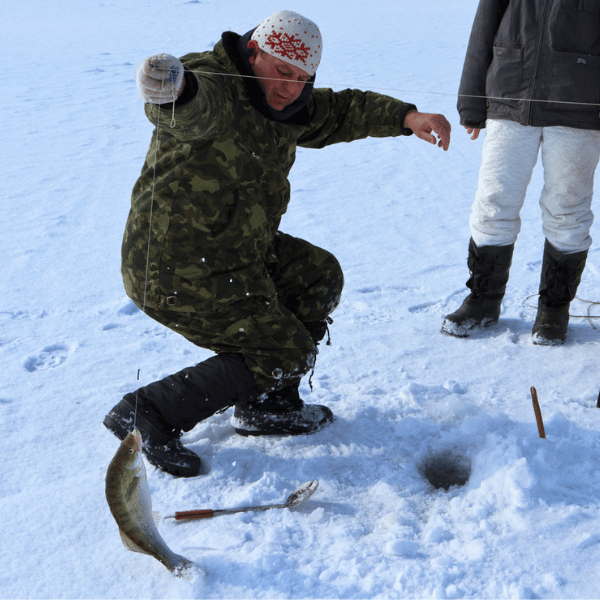
There are many ways you can tie your leader to your main line. The method you choose depends on the equipment you have as well as your personal preference. At the very least, you’ll need to decide if you’re going to use a swivel or tie the leader directly to the main line.
Many people find that connecting your leader and your tip-up line with a swivel makes a big difference. They believe that swivels do a better job of securing the leader in place. Swivels also prevent the line from twisting in the water.
Remember that when you use a swivel, don’t tie your lines directly together. Instead, tie each one to opposite ends of the swivel. A clinch knot often works best for this.
Should Leaders Be Stronger Than the Main Line?
Now that we know how to tie a leader to a main line, let’s discuss leader line strength. A leader line is almost always lighter than the main line, though there are a few circumstances where that’s not the case.
Situations where your leader line should be stronger than the mainline include:
Fishing by Sharp Objects
This could include anything from brush piles to rocks, submerged trees, or even sometimes docks. The last thing you want is for your leader to snap as soon as you cast it. So make sure it has enough strength for the environment you’ve chosen.
When Trying to Catch Fish with Sharp Teeth
Another way for your line to be too light is if the fish you’re trying to catch have really sharp teeth. If that’s the case, you’ll need a heavier leader.
When Using Monofilament Line
Mono lines are generally used for the kind of fish that can break other lines. If you’re fishing with a mono main line, then a mono leader is probably your best bet.
What is the Best Leader Line?
The best leader line is dependent on a number of factors including:
- What kind of fish you’re trying to catch
- The location in which you are fishing
- How deep or shallow the body of water is
When it comes to ice fishing in shallow water, your best bet is usually going to be a fluorocarbon leader. This line is harder for the fish to see and perfect for smaller fish.
If you’re fishing in deeper water, mono is likely going to work best. This is because you can see the movement in the line easily. This line is also less likely to freeze in deeper water and can sustain a lot of weight. When ice fishing, this freeze resistance becomes even more important.
Braided leaders are great for their sensitivity. Use them to catch that dwell in deeper water and have poor eyesight. Braided leaders make it easy to tell when you’ve got a fish nibbling or biting because you can feel any bit of tension from them. They’re not as good for the fish in shallow water, however, as those fish tend to see the line.
Can I Use a Regular Fishing Line as a Leader?
The most commonly used fishing line in the United States is monofilament. You can use monofilament lines as leaders, though your success may vary based on where you’re fishing and what you are fishing to catch.
If you’re dealing with fish that can see your line, then you may want to consider switching to a fluorocarbon line. Further, if you’re going to be fishing in shallow water, you’ll want a fluorocarbon as well. In those settings, it is far more likely that a fish will see your line.
All that said, a monoline is good for most fishing expeditions. And it will work just fine as a leader in most circumstances. The best way to find out if it’ll work for you is to try it! Most fishermen have regular fishing lines lying around. So, there’s no reason not to use one as a leader and see how it goes. After a little exploration, you may find that regular lines are perfectly acceptable as leaders.
